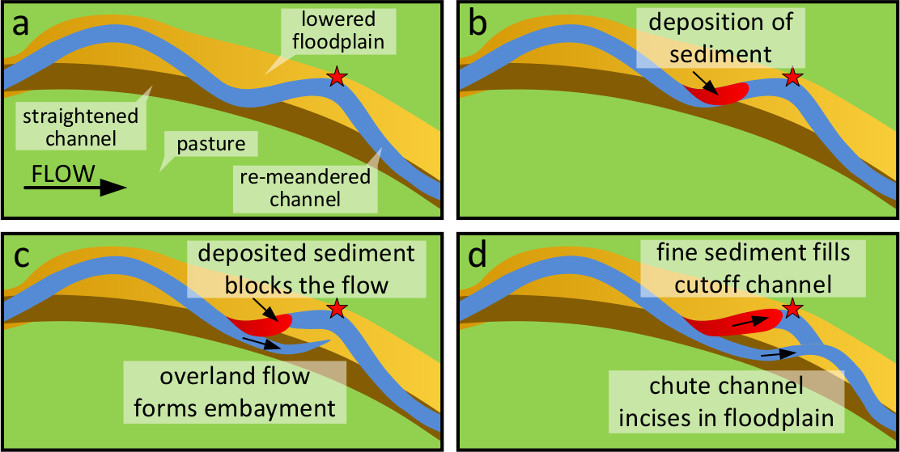
Stream restoration efforts often aim at creating new unconstrained meandering channels without weirs and bank revetments. In reconstructed streams, the initial morphological response of the new streams is often rapid, until a dynamic equilibrium is reached. Here we report on a chute cutoff that occurred within 3 months after realization of a stream restoration project, caused by a plug bar that formed in response to a backwater effect. The temporal evolution of the morphology of both the new and the old channels was monitored over a period of nearly 8 months, including precutoff conditions. The observations can be separated into three stages. Stage 1 is the initial period leading to cutoff vulnerability, stage 2 is the actual cutoff, and stage 3 is the morphological adjustment in response to the cutoff. In stage 1, a plug bar was deposited in one of the channel bends. Hydrodynamic model results show the location of the plug bar coincides with a region where bed shear stress decreased in downstream direction due to backwater. Longitudinal channel bed profiles show that the channel slope decreased soon after channel reconstruction. Hence, sediment from upstream was available to form the plug bar. After the plug bar was deposited, an embayment formed in the floodplain at a location where the former channel was located (stage 2). The former channel was filled with sediment prior to channel construction. It is likely that the sediment at this location was less consolidated, and therefore, prone to erosion. The chute channel continued to incise and widen into the floodplain and, after 6 months, acted as the main channel, conveying the discharge during the majority of time (stage 3). The cutoff channel gradually continued to fill with sediment, from the moment the plug bar formed until the chute channel incised into the floodplain. Sedimentary successions of the deposited material show upward fining, which is in agreement with observations of chute cutoffs in rivers. Although the artificial setting limits the degree in which the observed processes can be projected on natural rivers, the observations prompt to investigate the role of backwater effects in natural chute cutoff initiation.